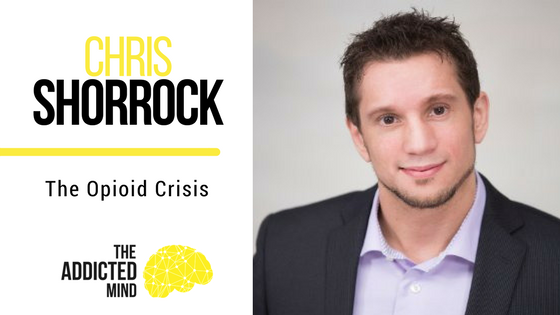He’s got experience in treating addicted disorders in different treatment centers that he’s been working with after being a registered psychologist. He’s also worked at the methadone maintenance treatment program. So we can certify he’s got first-hand experience dealing with opioid addiction.
An opioid is a powerful form of painkiller that’s known to suppress very intense pain. Nothing can compare to how effective opioid can be at masking or lowering pain. It must be noted that there’s a considerable difference between opioid and other forms of drugs like cocaine, alcohol, marijuana, etc. However, opioid does not in any way help to heal a particular disease but really what it does is it numbs your feelings so you won’t feel pain intensely.
It’s been puzzling to psychology practitioners to understand why opioid patients become so addicted even after healing. Recent research has shown it is the turn-on of addictive genes and it goes from using the drug to numb pain to abuse and ultimately addiction, which is hard to overcome.
When you think of opioid addiction, your mind goes straight to the homeless on the streets, but there are people of all socio-economic status, race, a religion that are dealing with addictive disorders with an opioid. Some people can be from wealthy families, and that can make the issue much more difficult to treat because there’s always a form of denial with them.
Opioid addiction is now an epidemic. People are dropping dead today than any other time in history. A probable cause of this is that now opioids are produced chemically. Fentanyl is a fully synthetic compound, which means it’s not using parts of the opioid poppy or plants anymore. Refining opioids made them even more powerful and refined down, which is useful but can dangerous.
With these new drugs, some addictive properties were underreported and overprescribed. Oxycodone was changed to Oxyneo to try and become tamper-resistant such that you couldn’t snort, or crush them, or inject them. It is so powerful that changing the mode of ingestion made it a whole different drug. It’s effective in suppressing pain but incredibly dangerous, and this is what led to allegations that the pharmaceutical responsible for it knew about how addictive this drug could become but just gave it out as a safe alternative.
It’s been discovered that taking the same amount of opioid over a given amount of time will start to have a lesser effect which can become an issue even in a regimented regular opioid use in problems like chronic pain.
Although there are other forms of treatment, the oldest and probably the best is taking all the opioid drugs, trade them all in and get a monitored, measured, regular dose of methadone. This can control the withdrawal symptoms, and it can also withdraw a considerable amount of perceived pain. It’s not an easy fix, though, but it’s helpful. However, one thing that Christopher has found in his practice is that the treatment differs between teenagers and adults. For teenagers, you need to have a form of active outdoor activity that leads to relationships if you want a chance of having a therapeutic relationship with them.
By all means, if you know anyone dealing with any addiction it might be friends, family, or even yourself, just come out of the shadows and ask for help. There are different kinds of support out there, and you only have to make an effort to know what will work for you. Not all routes you use will work, but don’t give up, try something different. You can get your life back and live the kind of life you want to ultimately.
TOPICS DISCUSSED IN THIS EPISODE
- Difference between opioid and other drugs.
- How opioid works with emotional pain.
- How people get addicted to opioids.
- Why opioid epidemic is huge.
- Types of people that would be addicted to opioids.
- Tolerance effect of opioid.
- Treatment options for the addiction.
- How treatment is different for teens than adults.
Contact Chris

